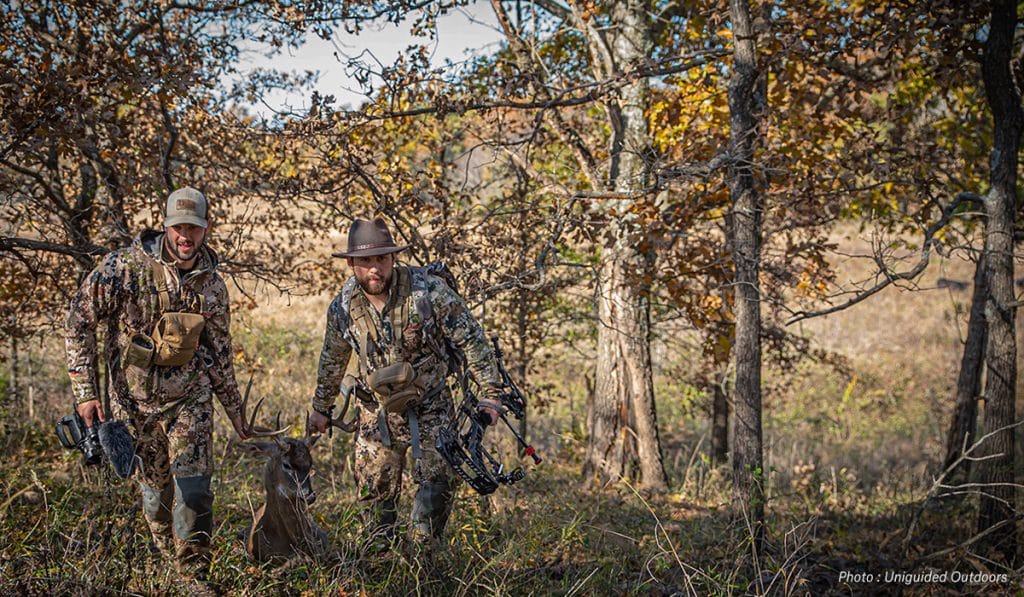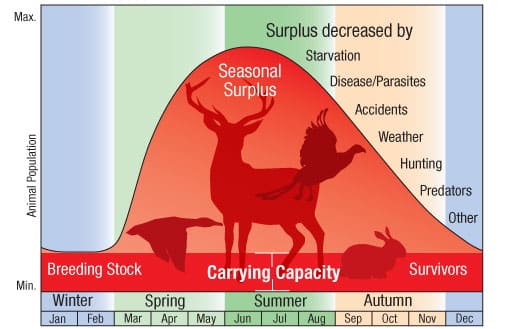Table of Contents
When it comes to hunting, success isn’t just about skill—it’s about being prepared. Imagine heading into the wild with the perfect balance of gear that ensures you’re ready for any challenge while staying light and mobile. Understanding your hunting carrying capacity is key to optimizing your gear and load, so you can focus on the hunt and not the weight on your back. This guide will help you master the art of packing efficiently, so you can carry everything you need without slowing down. Get ready to elevate your hunting game with the ultimate gear strategy!
What is Carrying Capacity in Hunting?

Carrying capacity in hunting refers to the maximum number of wildlife populations that a specific tract of land can sustain without degrading the habitat. This capacity of a habitat is determined by several factors, including the availability of food, water, and cover. The carrying capacity can vary from year to year due to changes in these essential resources, affecting how well the habitat can support the wildlife populations within it.
The carrying capacity is not static; it fluctuates with environmental conditions. For instance, as seasons change, food, water, or cover may be in short supply, leading to a decrease in the number of animals the land can vary in supporting. Conversely, favorable conditions can boost the number of animals that the habitat can support.
Factors That Limit Carrying Capacity
The carrying capacity for hunting is influenced by several limiting factors, which determine how well a habitat can support its wildlife populations. These factors that limit the carrying capacity include:
Food, Water, or Cover: The availability of food, water, or cover is essential for the survival of wildlife. If any of these resources may be in short supply, the carrying capacity of the area will be lower. For example, during droughts, food, water sources dwindle, and the habitat’s ability to support animals diminishes.
Seasons Change: As seasons change, the resources in any given habitat also change. Winter may bring scarcity, while spring might rejuvenate the land, influencing the capacity of a habitat to sustain its wildlife.
Nature or Humans: Human activities, such as urban development or agriculture, can reduce the carrying capacity by encroaching on natural habitats. Similarly, natural events like wildfires or floods can alter the carrying capacity wildlife by temporarily or permanently destroying parts of the habitat.
Wildlife Managers and Carrying Capacity
Wildlife managers play a vital role in monitoring and managing the carrying capacity of hunting areas. Their goal is to ensure that the tract of land can support its wildlife populations sustainably. By analyzing data on food, water, and cover availability, wildlife managers can estimate the capacity of a habitat and make informed decisions about hunting quotas and land management practices.
Effective management practices can help maintain or even increase the carrying capacity of a habitat. For example, controlled burns can encourage new plant growth, enhancing the availability of food, water and cover. Similarly, creating artificial water sources can mitigate the impact of droughts, ensuring that the habitat can support more wildlife.
What Are Limiting Factors in Hunter Education?

In hunter education, understanding what are limiting factors hunters ed is essential for promoting sustainable hunting practices. Limiting factors include anything that restricts the growth, abundance, or distribution of wildlife populations. These factors often determine the carrying capacity hunting areas and highlight the importance of respecting the limits of a habitat.
Educating hunters about these limiting factors helps them appreciate the delicate balance between hunting and conservation. By recognizing the impact of their actions on the carrying capacity wildlife, hunters can contribute to maintaining healthy ecosystems.
Optimizing Your Gear and Load
Understanding the carrying capacity in hunting also involves optimizing your gear and load to minimize your impact on the environment. While this might seem unrelated, carrying excess gear can increase your footprint, disturb wildlife, and reduce the time you spend effectively hunting. Streamlining your equipment ensures that you move quietly, reduce disturbances, and focus on a sustainable hunting approach.
When preparing for a hunt, consider what is essential for the environment you’re entering. Avoid unnecessary items that could weigh you down and increase your impact on the tract of land. By minimizing your load, you align more closely with the principles of sustainable hunting, ensuring that the habitat can support both you and the wildlife you’re pursuing.
Conclusion
The concept of carrying capacity is a fundamental principle in both wildlife management and sustainable hunting practices. By understanding the factors that limit the carrying capacity for hunting, you can make informed decisions that support the health of wildlife populations and the habitat can support. As wildlife managers continue to monitor and manage these capacities, hunters have a responsibility to respect the natural limits of the environment, ensuring that the balance between nature or humans remains intact for generations to come.


